Siyah zibast
“Black is beautiful” (in Persian)
If you ask most Iranians in the country and the diaspora if they’ve ever heard “Black is beautiful in Persian” the answer will be no.
The idea of saying those words—almost sounding like an aberration, or is it an anomaly?— their eyes would wonder. The argument would be that, we, Iranians, “we do not see color”, and older generations would often also top that with a “yadameh” (I remember) and mention one or two Black individuals they know or have heard of and are fond of. And yes, usually one of the individuals would be an athlete and the other, for a while now, has been Rihanna, Beyonce, or Barack Obama.
All Black, but none Iranian.
I’m also reminded by the few who know of the South of Iran and its Afro-Iranian population, that “we love our blacks in Iran” and that “I am not the same kind of blacks” as those in the South. “Na, they are black for different reasons there.” I was told as a young adult.
The sun.
It always prompts memories of being asked that exact question when growing up,
“Is it because of the sun, that your skin is so black?” asked the teen girl with a backpack slung over her shoulder, her classmate standing prudently behind. My eyes would usually look for an escape, this time, landing on the navy blue of their freshly ironed maghnaehs and matching navy uniforms. They must be on their way to class, I imagined.
That time was in Shomal, in northern Iran, but it could have been in Tehran where I lived and where hearing “siyah”—the colour black and a reference to being Black—was a regular occurrence. As was the need to explain why I was Black and why some parts of my black body, like my palms, were not black.
Although there is a collective amnesia around its existence, a general silence around its histories, hushes around its utterance, and little to no exposure to the vastness in its representation within Iranian realities, Blackness in Iran is real. Ignored, Blackness still exists alongside an Iranian fixation for white western “standards of beauty” with people of all genders turning to nose jobs to smoothen Iranian nose ridges and align it with the “ideals of a white western nose”. Today, small band-aids are even delicately laid on freshly fixed noses, the band-aid itself is even associated with a fashion style that indicates beauty and confirms social status.
My eyes would often fixate on my African Black Iranian nose as a young kid.
With my melanin constantly under scrutiny, the need to say “Black is beautiful” in the Iranian context has always been evident to me, even urgent. And you don’t have to be Black or even carry specific memories or experiences to acknowledge that as an Iranian.
With this visual essay, the Collective for Black Iranians invites audiences to see Blackness within Iranianeness and to echo it into the world to continue sewing our nuanced narratives into existence. In every detail of this artistic composition titled “We Are Here” there is the desire to show that Blackness is not only present in Iranian reality, it is also beautiful.
And the gold of the West African garment, called boubou, worn by Parisa Nkoy, is a reminder of the beauty of our African visuals. The green and gold mask covering part of Alex Eskandarkhah’s face, a statement of the importance of knowing the depth of our African heritages. And the roussari—Iranian veil—sitting atop Maya June Mansour’s curls as well as the Ankara fabric wrapped around Maryam Shahyegh’s body while holding her son, are all testaments of the urgent need to say “Siyah zibast.”
Black is beautiful.

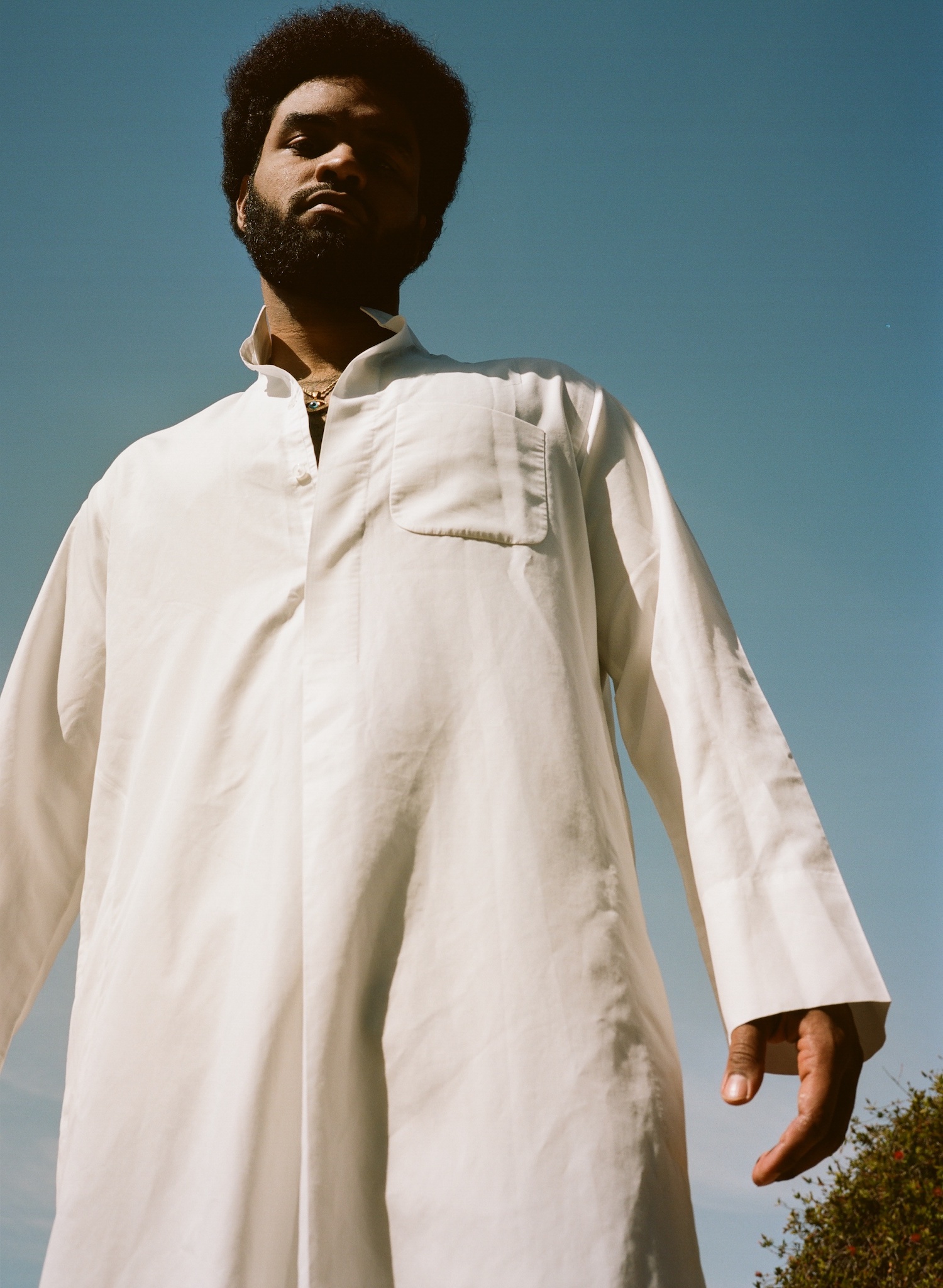
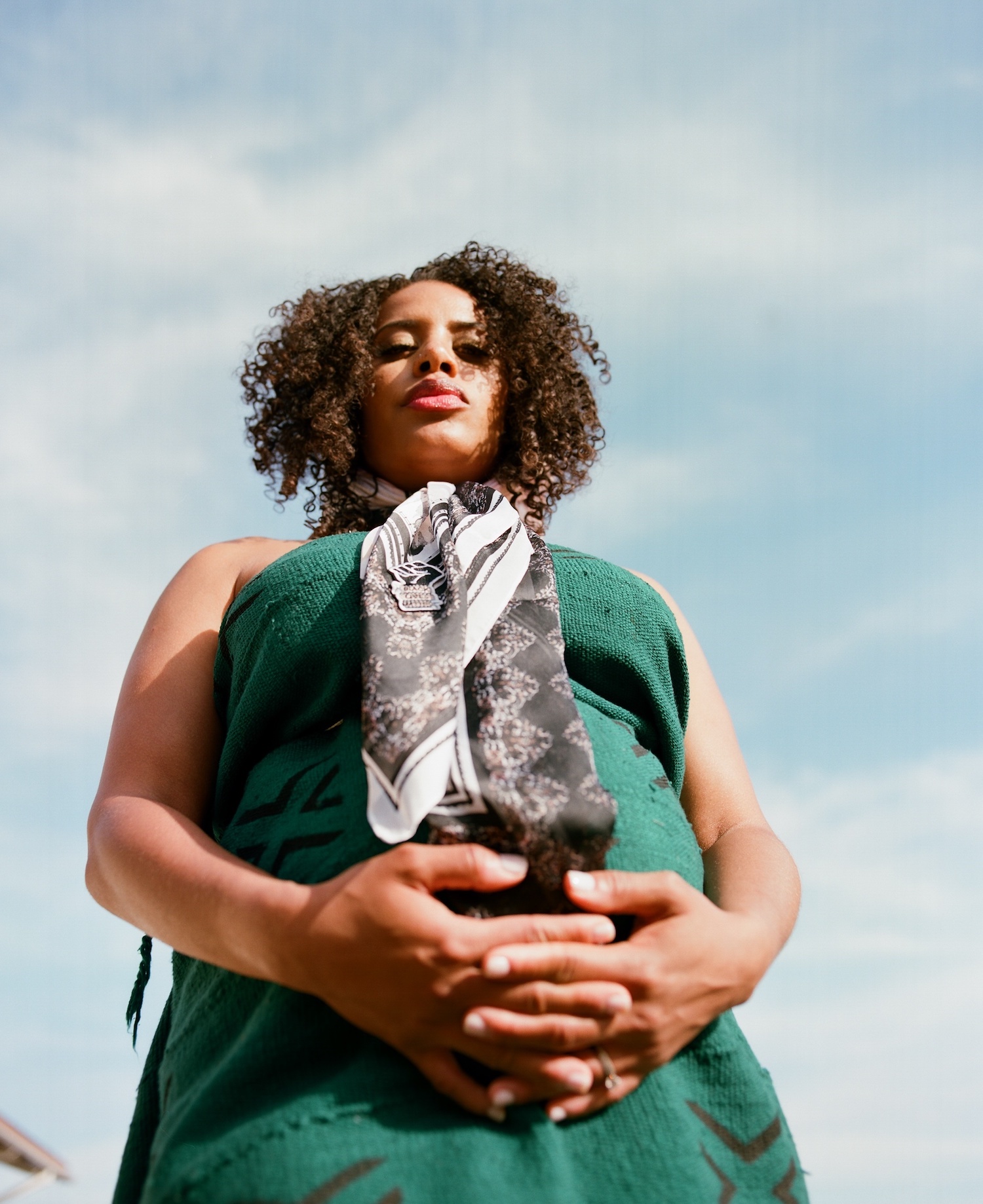


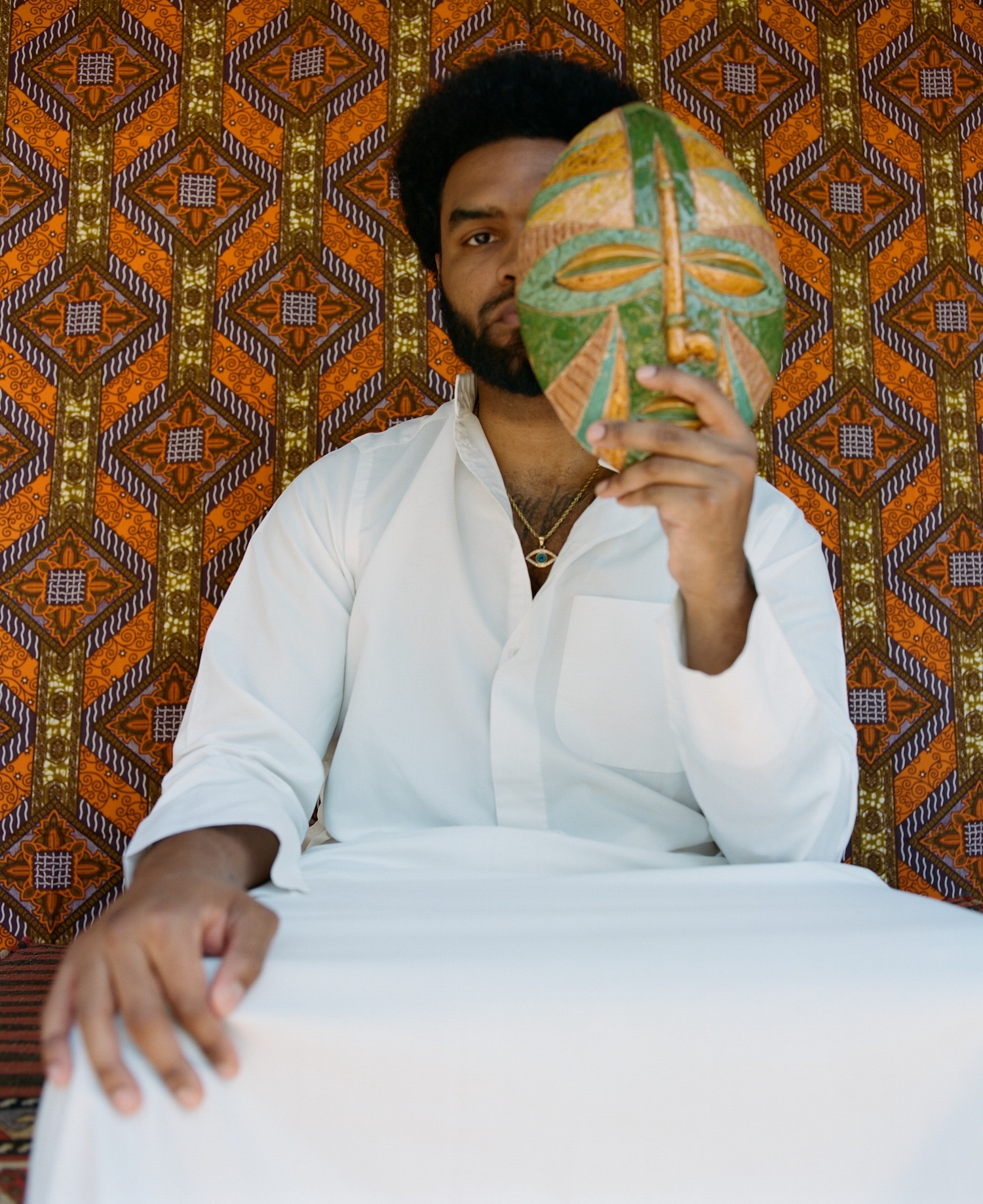
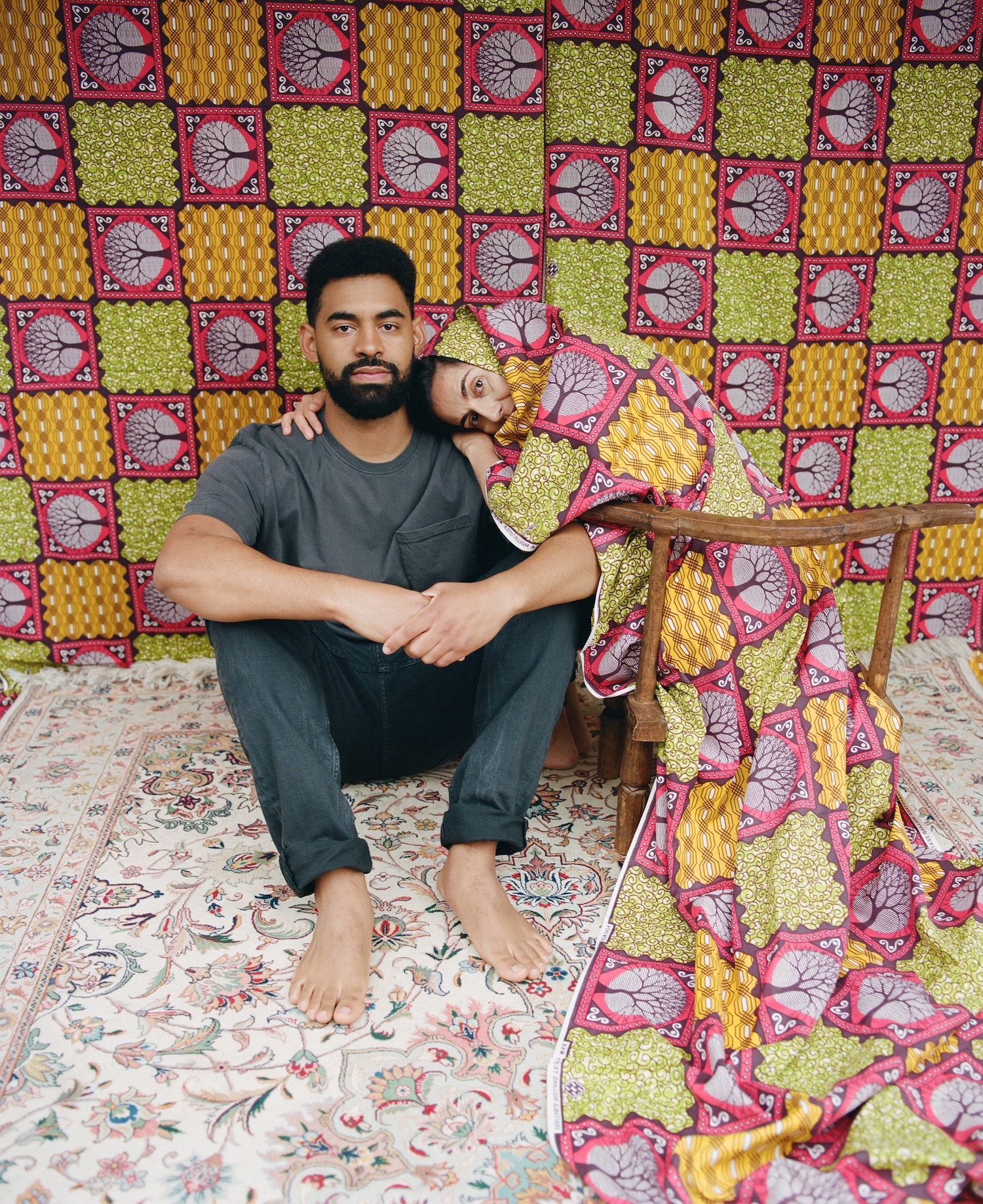
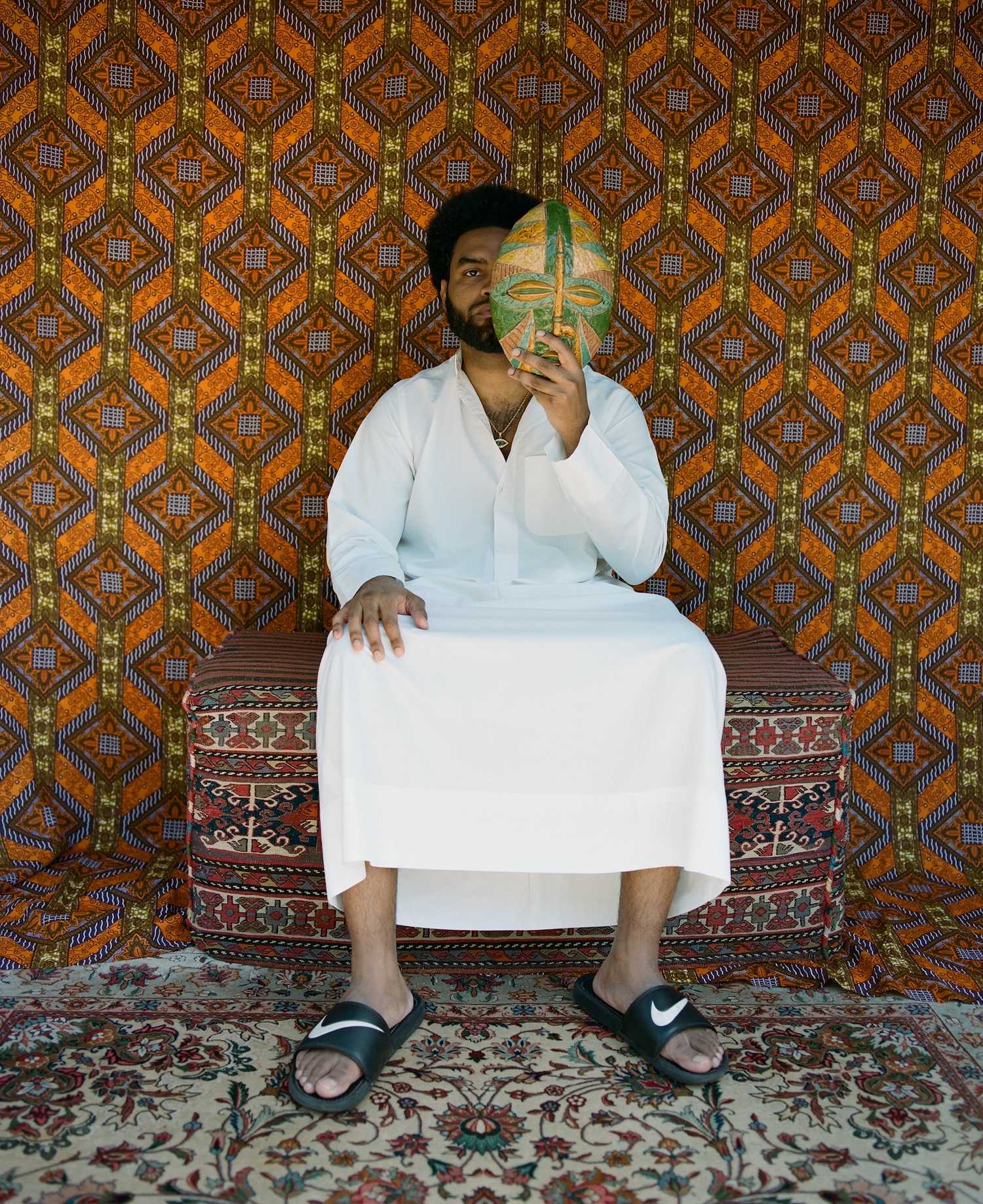


Priscillia Kounkou-Hoveyda is a Congolese Iranian French human rights jurist, writer, documentary filmmaker, and the founder of the Collective for Black Iranians. She lives in Freetown, Sierra Leone.
Photographs by Henna Koskinen. Creative direction: Priscillia Kounkou-Hoveyda.